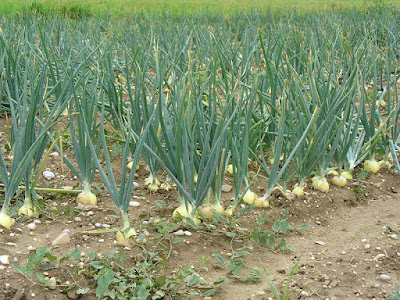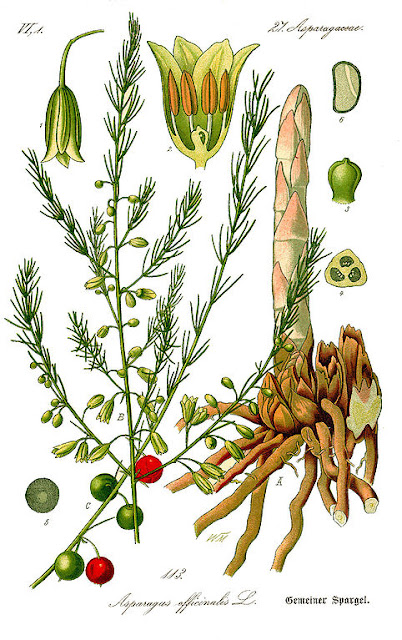 |
| What is the Tulip Breaking Virus? |
The 'Tulip Breaking Virus' is an almost a mythical disease that had confounded tulip breeders for centuries. Responsible for the stunning colour breaks in single, block colored tulips these 'broken' color tulips were a major factor in the financial madness that occurred during the Tulip mania period of 1636-1637.
During this time ownership of these rare specimens was a reflection of your wealth and standing within society, and for a short period also made good business sense. The introduction of single colored bulbs infected by the Tulip Breaking Virus caused an immediate sensation Up until then, the majority of contemporary tulips - although bold in color - were only ever a single color, ie if they were red then they would be a block of red coloration, if they were yellow then they would be a block of yellow coloration. With the introduction of the new 'broken' tulip - this meant that the tulips lock on its single bold color was broken allowing unique color variations never seen before.
 |
| What is the Tulip Breaking Virus? |
For centuries, generations of Europe's top Tulip breeders believed that it was environmental conditions that cause these single color tulips to break. It was generally believed that these unique coloration could be induced by either frequently changing the soil, allowing the bulb to weaken by allowing it to seed, or storage on exposed condition s so that the bulb would be 'acted' upon by the rain wind frost or sun. Eventually it was series of experiments by Dorothy Cayley that led to the discovery of the 'Tulip Breaking Virus' began in 1928. Working at the John Innes Horticultural Institution, She discovered that by transferring infected tissue from broken bulbs to healthy bulbs during their dormant state, the infective agent that caused the break in color would also be transferred. These experiments were further refined to include the tiny amounts that could be transferred by an insect which became her final deduction. The virus was eventually proven to be transferred by the following aphid species; Myzus persicae, Macrosiphum euphorbiae, Aphis fabae, Aphis gossypii, Dysaphis tulipae, and Aulacorthum circumflexum.
The transfer of the virus is simple, as the aphid bites into an infected plant, small amounts of the virus are left in it mouthparts. When the aphid moves to another host the virus enters the plant's vascular system when the aphid once again starts to feed
Typically, the symptoms of the Tulip breaking virus caused color breaking on the petals of pink, purple and red flowered cultivars although yellow and white colored varieties are not affected. This 'breaking' can take the form of conspicuous white or yellow streaking across the petals or streaking of a darker shade compared to the original color. Sometime you may see a combination of the two effects, and on rare occasions you may come across mottling or striping of the plants leaves.
In many countries such as Great Britain, bulbs infected by the virus are illegal for sale to prevent it from spreading and weakening cultivated stocks. Control of the Tulip breaking virus is also notoriously difficult to control although perhaps the best means of treatment is to remove and burn infected plants as you see them. As a precaution, do not plant tulips next to lilies as they are also able to carry the virus, allowing cross contamination to occur.
There are a small number of tulips dating from the Tulipmania period that are still in existence today, some are even available to buy for only a few pounds at your local plant retailer. However, and rather surprising, there are a few varieties of 'broken' bulbs whose worst aspects of the viral infections have remained benign. One such example is the rare Tulip 'Absalom' that is still around today and is shown in the photograph above. However, like the Rembrandt tulips, there are many copies around that try to rekindle the look of the old Dutch greats - many of them are poor imitations but there is one - Tulip 'Rem's Sensation' that does at least get close.
In the 21st century there appears to be only one place where the breeding of broken Tulips is alive and well and that is 'The Wakefield and North of England Tulip Society' - the last of the great Tulip Societies in Great Britain.
Main image credit - Simon Eade - gardenofeaden@gmail.com
In text image of Semper Augustus in public domain
For related article click onto the following links:
DO BLACK TULIPS REALLY EXIST?
DO TULIPS COME BACK EVERY YEAR?
How to Grow Species Tulips from Seed
HOW TO GROW TULIPS
HOW TO OVERWINTER RARE AND SPECIES TULIPS
LOST TULIPS OF THE DUTCH GOLDEN AGE - SEMPER AUGUSTUS AND THE VICEROI
OLD, BROKEN, AND UNUSUAL DUTCH TULIP VARIETIES
OLD DUTCH TULIPS - Tulip 'Absalom'
THE WORLD'S MOST EXPENSIVE TULIP - EVER!
TULIPA ACUMINATA
TULIP HISTORY AND POPULAR VARIETIES
WHAT IS AN F1 HYBRID?
TULIP ‘SEMPER AUGUSTUS’ - DOES IT STILL EXIST?
Tulips Broken by Virus
WHAT IS CHLOROSIS?
How to Grow Species Tulips from Seed
HOW TO GROW TULIPS
HOW TO OVERWINTER RARE AND SPECIES TULIPS
LOST TULIPS OF THE DUTCH GOLDEN AGE - SEMPER AUGUSTUS AND THE VICEROI
OLD, BROKEN, AND UNUSUAL DUTCH TULIP VARIETIES
OLD DUTCH TULIPS - Tulip 'Absalom'
THE WORLD'S MOST EXPENSIVE TULIP - EVER!
TULIPA ACUMINATA
TULIP HISTORY AND POPULAR VARIETIES
WHAT IS AN F1 HYBRID?
TULIP ‘SEMPER AUGUSTUS’ - DOES IT STILL EXIST?
Tulips Broken by Virus
WHAT IS CHLOROSIS?
















